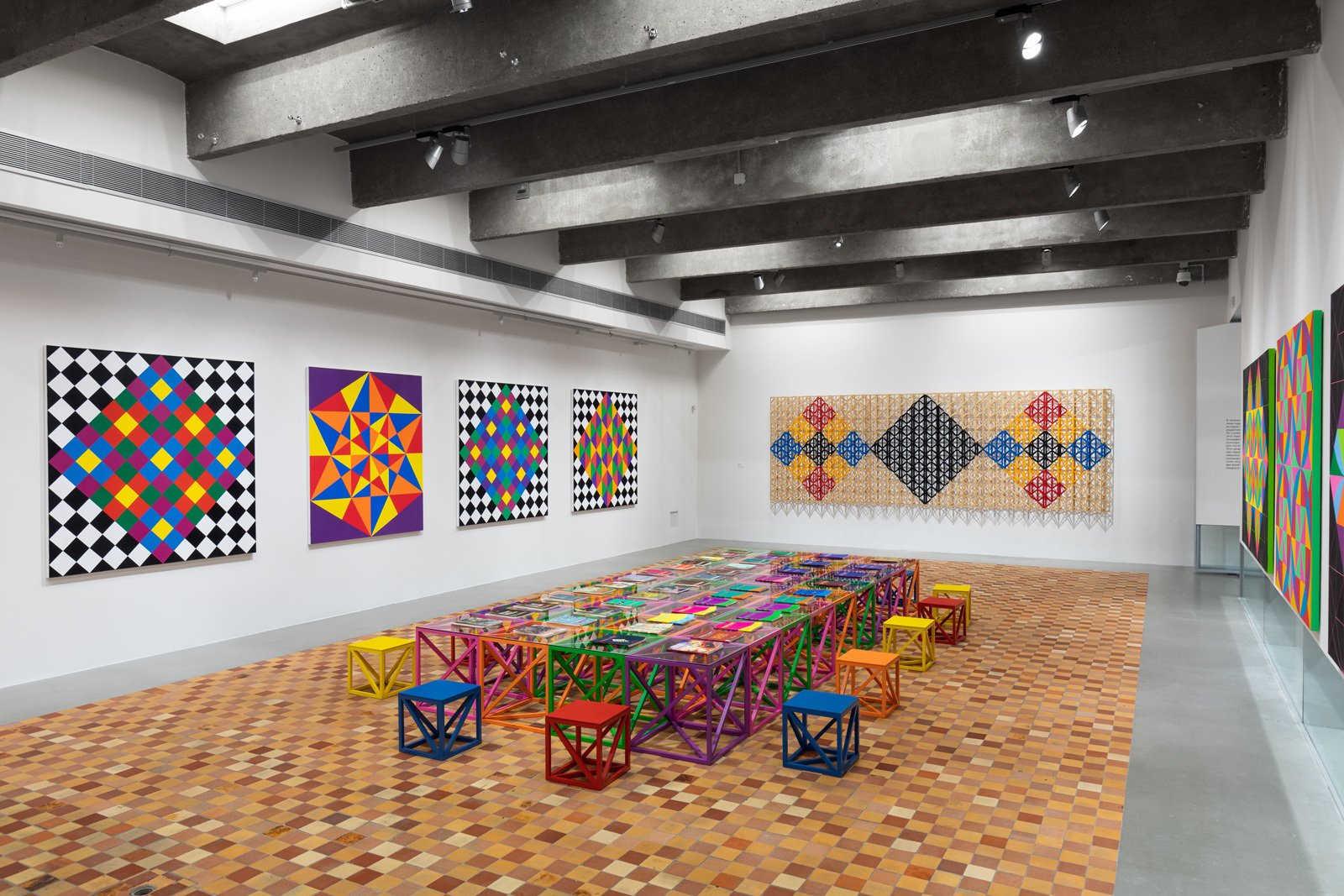Reading Room — Black Square breaking into Primary Colours

In his latest work Araeen tries to keep everything as simple as he can. In a conversation with writer Kaelen Wilson-Goldie, the artist was characteristically blunt. 'I'm fed up with the avant-garde and I want to get out of it', Araeen asserts. 'The notion of abstraction is seen to be a twentieth-century phenomenon. Historically it happened 1200 years ago in Damascus. Europeans don't want to hear about that'. This voluntary exile from the context of contemporary art is inextricably linked to Araeen's distrust of the Western notion of progress. For Araeen, progress is often the justification for modernity's more violent tendencies and the First World's exploitation of the colonies. Progress also connects with increased individualism, something that Araeen has called 'narcissistic ego', or 'narego'. ‘In my present work I am trying to be like a potter, although I cannot remove from what I produce its ideological level, which is implicit rather than explicit’, he says. It is no surprise therefore that he chose Malevich as his interlocutor in this instance. Commenting on figurative artists en masse, Malevich made a pointed, if general, critique: ‘Masked by the colour of talentless lines, individualism rides beneath the banner of their movement’. The breakdown of Black Square into primary colours, as implemented by Araeen, is something that Malevich also saw as a logical continuation of the Suprematist vision. He compared Black Square to a ‘tunnel of night’, while allowing for colours to ‘become traffic lights and light new pathways’. Araeen’s version of the equalizing idea in the context of the postcolonial struggle provides a very powerful instance of a new pathway in art.